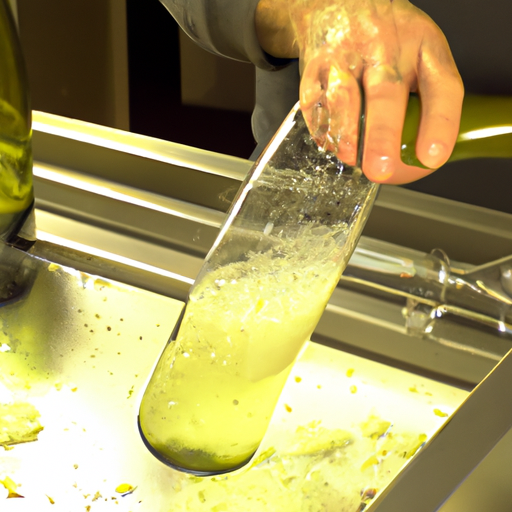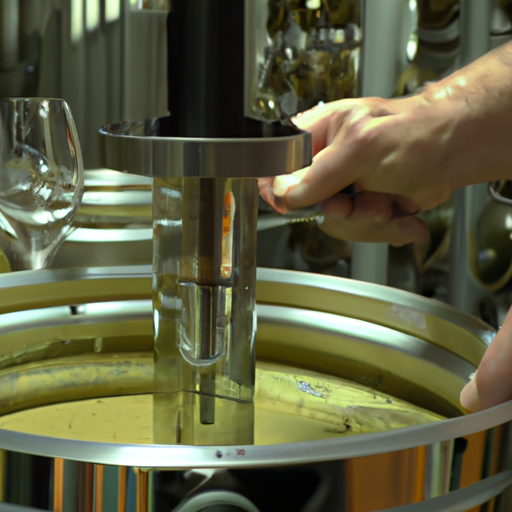
The History and Evolution of Chardonnay in Sonoma
Chardonnay, a versatile and beloved white wine grape, has a long and storied history in Sonoma, California. The region’s unique climate and soil conditions have made it an ideal location for cultivating this varietal, resulting in exceptional wines that have gained international acclaim.
The history of Chardonnay in Sonoma can be traced back to the early 1800s when European settlers first brought grapevines to the region. However, it wasn’t until the mid-20th century that Chardonnay began to gain prominence. In the 1950s and 1960s, a handful of visionary winemakers recognized the potential of Sonoma’s terroir for producing high-quality Chardonnay.
These early pioneers experimented with different winemaking techniques and vineyard practices to unlock the full potential of the grape. They discovered that Sonoma’s cool climate, influenced by the nearby Pacific Ocean, allowed for slow and even ripening of the grapes, resulting in wines with vibrant acidity and complex flavors.
As the reputation of Sonoma Chardonnay grew, so did the demand for these wines. Winemakers began to invest in new vineyards and modern winemaking facilities, further elevating the quality of the wines produced. Today, Sonoma is home to numerous world-class wineries that specialize in crafting exceptional Chardonnay.
One of the key factors that sets Sonoma Chardonnay apart is the diversity of its terroir. The region is characterized by a patchwork of microclimates and soil types, each contributing its own unique characteristics to the wines. From the cool, foggy Russian River Valley to the warmer, sun-drenched Sonoma Valley, winemakers have a wide range of options when it comes to selecting vineyard sites.
This diversity allows winemakers to create Chardonnays with a wide range of styles and flavor profiles. Some vineyards produce wines with crisp acidity and vibrant citrus flavors, while others yield wines with rich, tropical fruit notes and a creamy texture. This versatility is one of the reasons why Chardonnay remains one of the most popular and widely planted grape varieties in Sonoma.
In recent years, there has been a shift towards a more minimalist approach to winemaking in Sonoma. Winemakers are focusing on showcasing the unique characteristics of the fruit and terroir, rather than relying on heavy oak influence or excessive manipulation in the cellar. This has resulted in wines that are more balanced, elegant, and reflective of their origin.
As the 2017 vintage approaches, winemakers in Sonoma are excited about the potential it holds for crafting exceptional Chardonnay. The growing season was marked by moderate temperatures and ample rainfall, providing the grapes with optimal conditions for ripening. The resulting wines are expected to have a beautiful balance of fruit, acidity, and minerality.
In conclusion, the history and evolution of Chardonnay in Sonoma is a testament to the region’s commitment to producing exceptional wines. From the early pioneers who recognized its potential to the modern-day winemakers who continue to push the boundaries, Sonoma has established itself as a premier destination for Chardonnay lovers. With its diverse terroir and commitment to quality, Sonoma is poised to continue crafting exceptional Chardonnay for years to come.
Techniques and Tips for Crafting Exceptional 2017 Chardonnay in Sonoma

Crafting exceptional Chardonnay is an art form that requires skill, knowledge, and attention to detail. In Sonoma, where the climate and terroir are ideal for growing this varietal, winemakers have the opportunity to create truly exceptional wines. In this article, we will explore some techniques and tips for crafting exceptional 2017 Chardonnay in Sonoma.
One of the first steps in crafting exceptional Chardonnay is selecting the right grapes. Sonoma offers a variety of Chardonnay clones, each with its own unique characteristics. It is important to choose clones that are well-suited to the region’s climate and soil conditions. This will ensure that the grapes have the potential to develop the desired flavors and aromas.
Once the grapes have been harvested, they must be handled with care to preserve their quality. Gentle pressing is essential to extract the juice without extracting any harsh tannins or bitterness from the skins. This can be achieved by using a gentle press or by hand-sorting the grapes before pressing.
Fermentation is a critical stage in the winemaking process that greatly influences the final character of the wine. For Chardonnay, many winemakers choose to ferment the juice in oak barrels. This imparts a rich, creamy texture and adds complexity to the wine. It is important to select the right type of oak and to monitor the fermentation process closely to ensure that the wine develops the desired flavors and aromas.
During fermentation, the winemaker has the opportunity to influence the style of the wine by controlling the temperature. Lower temperatures result in a slower fermentation, which can help to preserve the delicate aromas and flavors of the grapes. Higher temperatures can produce a more robust and full-bodied wine. It is important to find the right balance and to adjust the temperature as needed throughout the fermentation process.
After fermentation, the wine is typically aged in oak barrels to further develop its flavors and aromas. This is known as barrel aging and can range from a few months to several years, depending on the desired style of the wine. During this time, the wine undergoes a process called malolactic fermentation, which softens the acidity and adds a buttery, creamy texture.
Throughout the aging process, it is important to regularly taste and monitor the wine to ensure that it is developing as desired. This involves assessing the balance of flavors, acidity, and tannins, as well as identifying any potential faults or off-flavors. Adjustments can be made, such as blending different barrels or adding small amounts of other wines, to achieve the desired final product.
Once the wine has reached its optimal aging, it is time for bottling. This is a critical step that requires careful attention to detail to ensure that the wine is not exposed to oxygen, which can cause it to spoil. The wine is typically filtered and then bottled, often with the addition of a small amount of sulfur dioxide to help preserve its freshness and prevent spoilage.
Crafting exceptional 2017 Chardonnay in Sonoma requires a combination of skill, knowledge, and attention to detail. From selecting the right grapes to carefully monitoring the fermentation and aging processes, every step plays a crucial role in creating a wine that is truly exceptional. By following these techniques and tips, winemakers in Sonoma can master the art of crafting exceptional Chardonnay that showcases the unique terroir and climate of the region.
Exploring the Unique Terroir of Sonoma for Producing Exceptional 2017 Chardonnay
Sonoma County, located in the heart of California’s wine country, is renowned for its exceptional wines. Among the many varietals produced in this region, Chardonnay stands out as one of the most popular and highly regarded. The unique terroir of Sonoma plays a crucial role in crafting exceptional 2017 Chardonnay, making it a must-try for wine enthusiasts.
The terroir of Sonoma County is characterized by a combination of factors that contribute to the distinctiveness of its wines. The region’s Mediterranean climate, with warm, dry summers and cool, wet winters, provides the ideal conditions for growing Chardonnay grapes. The cool ocean breezes that sweep through the Russian River Valley and the Sonoma Coast help to moderate the temperatures, allowing the grapes to ripen slowly and develop complex flavors.
The diverse soils found in Sonoma County also play a significant role in shaping the character of its Chardonnay wines. The region’s volcanic, clay, and loamy soils provide different levels of drainage and mineral content, which influence the grapes’ growth and flavor profile. Winemakers carefully select vineyard sites with specific soil types to achieve the desired balance and complexity in their Chardonnay wines.
In addition to the natural factors, the skill and expertise of Sonoma’s winemakers are crucial in crafting exceptional 2017 Chardonnay. These winemakers have honed their craft over generations, combining traditional winemaking techniques with modern innovations to create wines of exceptional quality. They carefully monitor the vineyards throughout the growing season, ensuring that the grapes are harvested at the optimal level of ripeness.
Once the grapes are harvested, they are gently pressed to extract the juice, which is then fermented in oak barrels. The use of oak barrels imparts unique flavors and aromas to the wine, adding layers of complexity. Sonoma winemakers often employ a combination of new and used oak barrels to achieve the desired balance between fruit flavors and oak influence.
During the fermentation process, winemakers carefully control the temperature and duration to preserve the delicate flavors and aromas of the Chardonnay grapes. This attention to detail ensures that the wine retains its freshness and vibrancy, while also developing the rich, buttery notes that are characteristic of Sonoma Chardonnay.
After fermentation, the wine is aged in oak barrels for a period of time to further develop its flavors and texture. This aging process allows the wine to integrate and mellow, resulting in a harmonious and well-balanced Chardonnay. The length of aging varies depending on the winemaker’s style and the desired characteristics of the wine.
Finally, the wine is bottled and aged for a short period before it is released to the market. This additional aging in the bottle allows the flavors to further develop and evolve, ensuring that the wine is at its peak when it reaches the consumer.
In conclusion, Sonoma County’s unique terroir, combined with the skill and expertise of its winemakers, makes it an ideal region for producing exceptional 2017 Chardonnay. The region’s Mediterranean climate, diverse soils, and careful winemaking techniques all contribute to the distinctiveness and quality of these wines. Whether you are a seasoned wine connoisseur or a casual enthusiast, exploring the Chardonnays of Sonoma is a journey worth taking.






